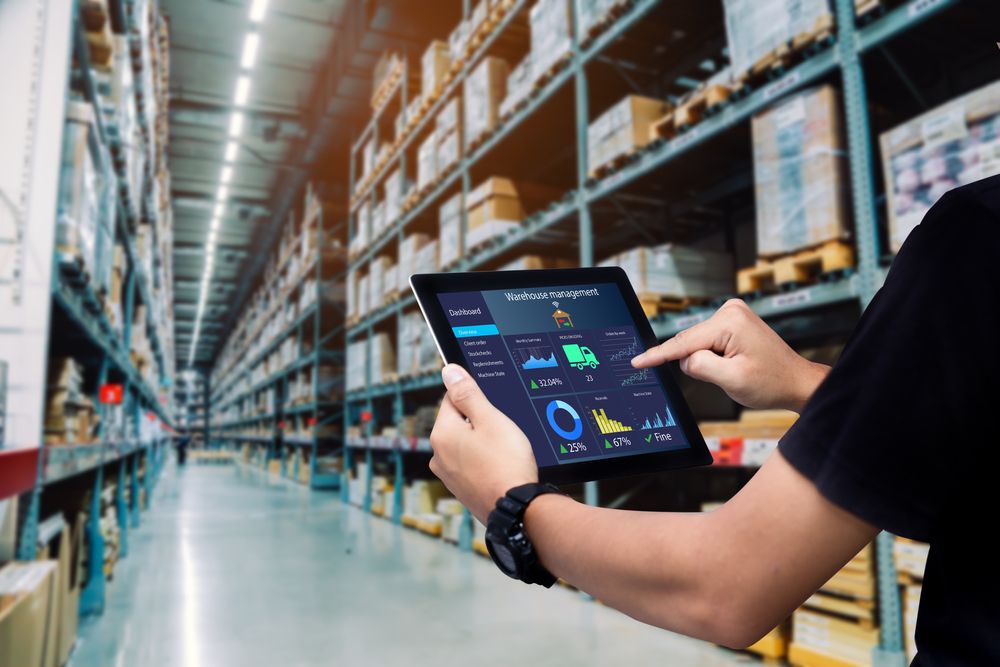What Logistics Organizations Can Do to Improve Processes Amidst Increased Demand
As global supply chain bottlenecks persist, optimizing the controllables has never mattered more. Here are five process improvements warehouses are...
3 min read
Sharon Carolan : Aug 9, 2019 5:24:44 AM
As wearables begin to make a significant impact in the manufacturing, field service, and security industries, the cybersecurity implications are not to be ignored.
Wearable technologies are proliferating rapidly. A recent CCS report states that 85 million wearables will be sold in 2019, and that number is expected to rise to 137 million in 2022 when experts predict that the total market will exceed $60 billion.
Although wearables have thus far been viewed largely from a consumer-first perspective, they’ve also found a home in a number of professional industries. In fact, researchers report that a surprising 16 percent of workers use wearables in their daily jobs, and more than half of workers in the US say they’re excited to work with new technology.
We’ve seen some public concern around the potential for wearables to negatively impact employment — this concern is largely unfounded. In fact, the opposite holds true — wearables have both the potential and proven ability to enhance worker productivity and make our workplaces safer. These three key industries are leading the way in capitalizing on the benefits of wearables:
The manufacturing industry is one of the biggest players driving the adoption of wearables in professional environments. CTOs of large manufacturing companies are leveraging wearable technology to reduce worker fatigue, boost productivity, and keep workers safe.
For example, Audi has developed a lightweight, wearable exoskeleton that employees can comfortably wear while on the job. This exoskeleton distributes weight in such a way that workers are able to alleviate much of the physical pressure they experience during manual labor.
Audi claims that workers using the exoskeleton experience 20 to 30 percent less back strain while carrying out day-to-day responsibilities. This type of technology can greatly improve the health of workers performing heavy lifting, repetitive tasks, and difficult manual labor.
Dutch e-fulfillment company Active Ants has been running experiments with Google Glass, a smart device that users wear like a regular pair of glasses. Without needing to hold a phone or tablet, Google Glass allows users to view a projected screen in a hands-free fashion. When Active Ants tested this technology, their workers showed a 15 percent improvement in speed, and made 12 percent fewer errors than average employees carrying out the same tasks.
Another industry bringing wearables to the fore is field service. Because field service is not a one-size-fits-all industry, different wearable technologies are delivering value in a myriad of ways.
The most commonly utilized wearable in the industry is the smartwatch. Smartwatches, which pair with smartphones to allow users to send and receive messages, can help field service employees mitigate the disruptions that traditional mobile phones and devices usually cause during their workday. This is particularly helpful for employees working on-the-go, those performing manual labor, and those that might not otherwise have their mobile notifications turned on.
Smart glasses are still in the early stages in terms of adoption, but the technology could fundamentally transform the way that field workers approach their jobs. For example, a field technician might use products like Vuzix or Meta Glasses to easily display instruction steps while fulfilling a repair job.
Additionally, activity trackers like Fitbit or Nike+ Fuelband — which are usually marketed to athletes for personal use — are being leveraged by field service managers to track their employees’ biometric data while they are out on the job. By using activity trackers to monitor a worker’s heart rate, pulse, body temperature, and more, field managers can enforce safer policies for their teams.
One of the first industries to adopt wearable technologies was security — more specifically, police and security organizations. Wearables have already been used to help keep officers safe on the job, and a new generation of hardware promises to bring further improvements, providing real-time access to critical information. With better technology, officers can access more information faster — and make better decisions during high-stakes scenarios.
For example, a police department can use a smartwatch to act as a wrist-worn CAD device. This makes it easier for officers to be connected to their fellow officers and keep abreast of critical updates, regardless of their proximity to a patrol vehicle. Additionally, since the watch doesn’t impede the officer’s ability to use their hands, it’s much more conducive to the need for officers to be always-at-the-ready.
Police work is dangerous, and there is always the potential for a high-stakes situation to erupt without warning. In these situations, wearables can help police departments — including central dispatch — get a better understanding of their officers’ status in the field. Accelerometers, gyroscopes, and heart rate monitors can provide critical actionable data. This way, if an officer suddenly starts running, a dispatch center can take this as a sign that a foot chase has been initiated and provide immediate support.
As hardware, software, and wearable services improve, we can expect to see greater adoption of wearables in the workplace in the coming years. Despite the excitement around the functionality of wearables, CIOs must also be aware of the security challenges associated with wearables in the workplace. To help your organization adopt wearables into daily operations, you’ll need to ensure you have adequate technical and network support — that’s where Turn-key Technologies, Inc. (TTI) comes in.
With nearly three decades of experience, TTI has the expertise necessary to help businesses prepare for wearables in the workplace. We not only design, deploy, and manage cutting-edge enterprise networks — we do so with the future in mind.

As global supply chain bottlenecks persist, optimizing the controllables has never mattered more. Here are five process improvements warehouses are...

Here are some strategies that enterprises can implement to better staff, upskill, and improve their IT departments. As big businesses increasingly...

As the number of IoT devices continue to soar, so do the security risks associated with their presence. Implementing IoT security best practices...